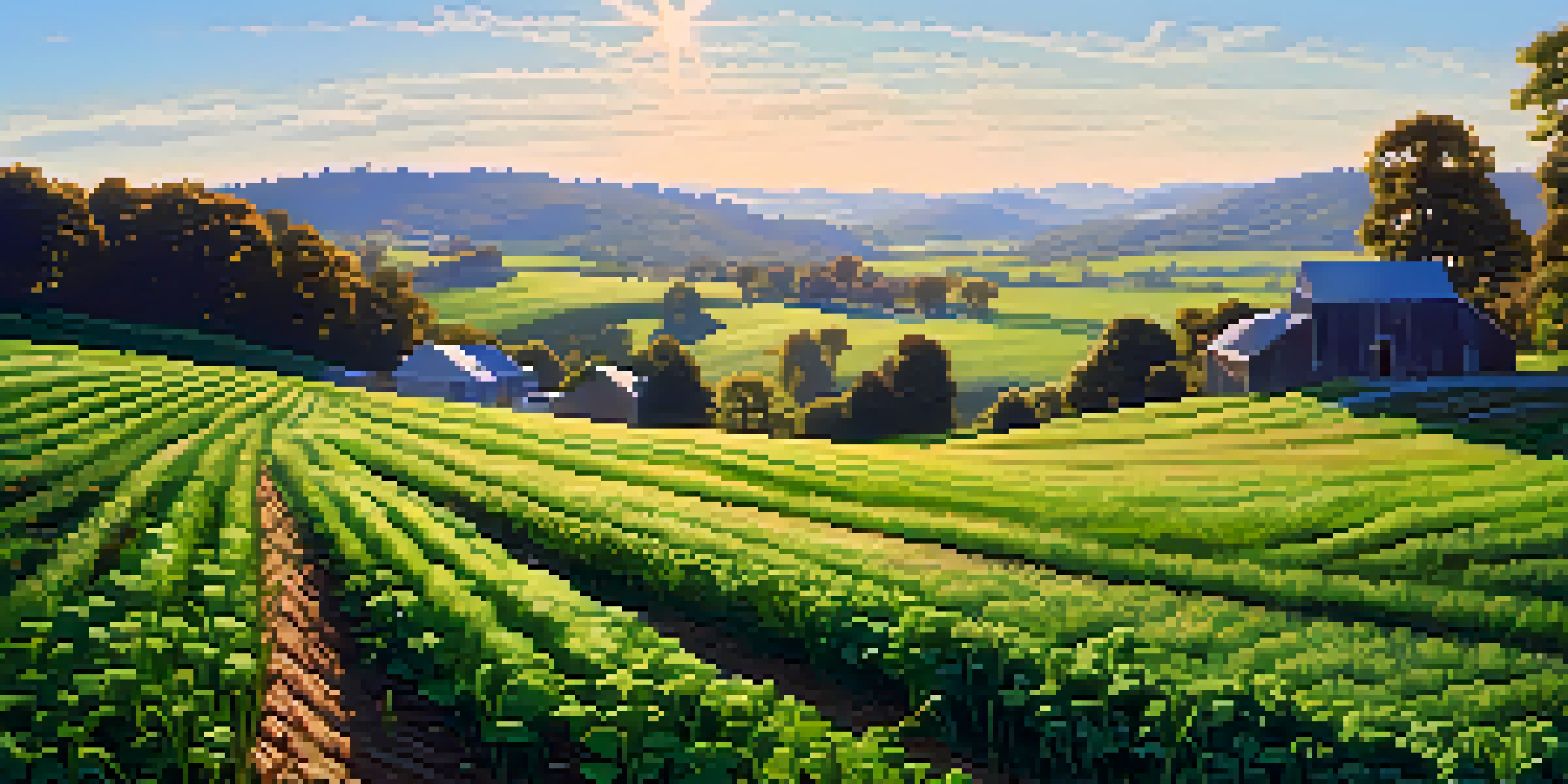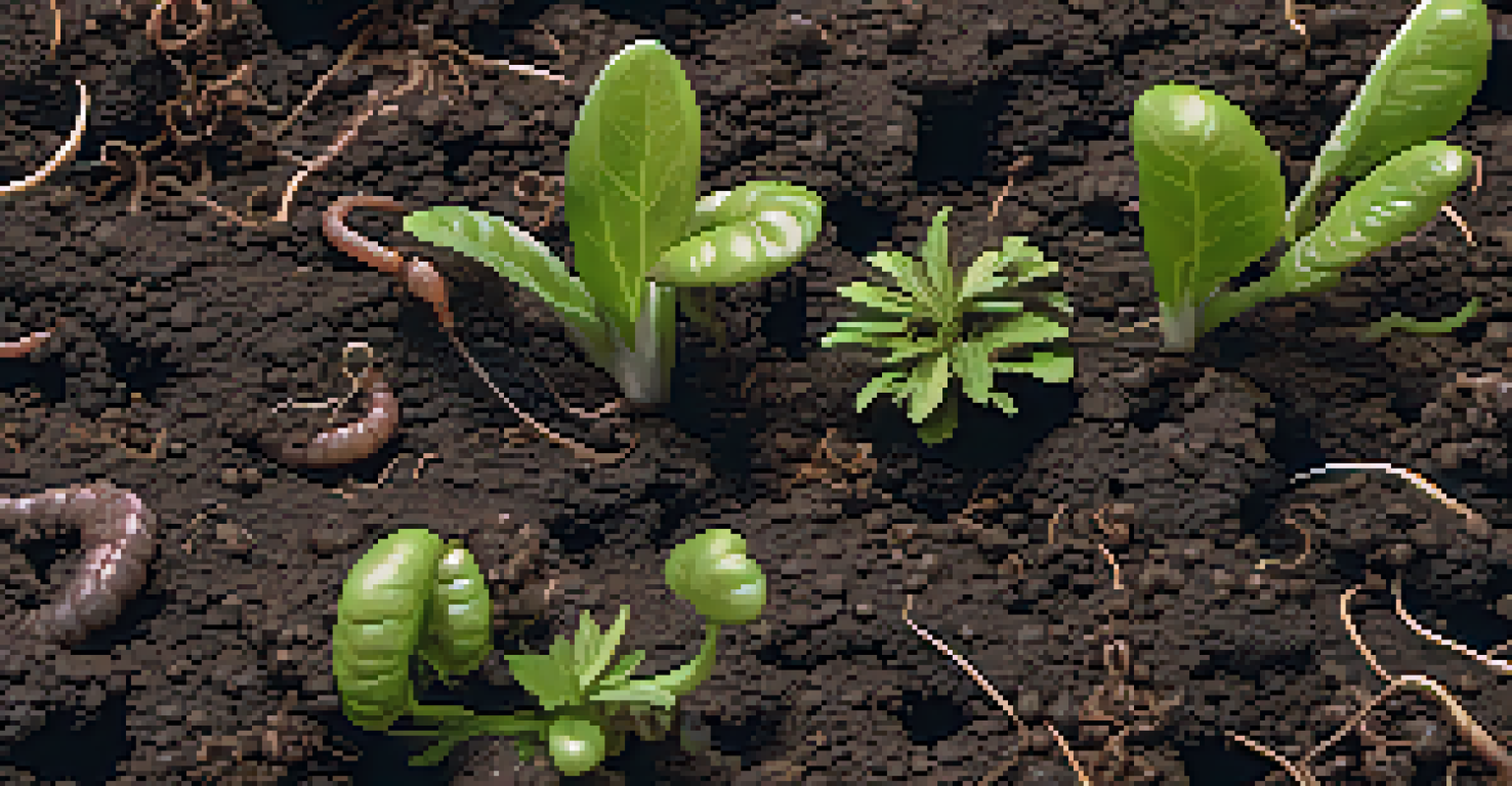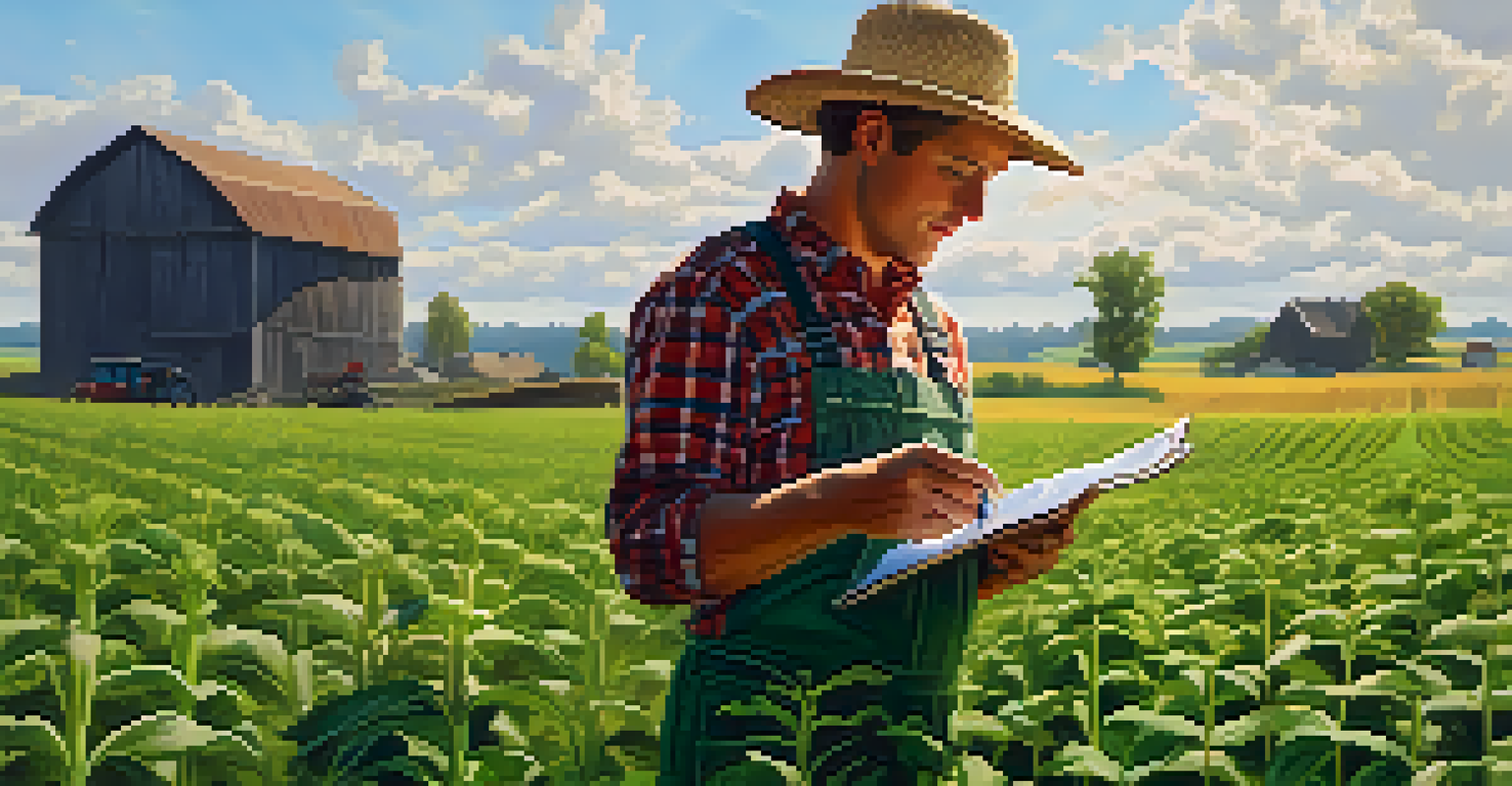Using Cover Crops to Enhance Soil Health and Climate Resilience

What Are Cover Crops and Their Purpose?
Cover crops are specific plants grown primarily to improve soil health rather than for harvesting. They serve multiple purposes, such as preventing soil erosion, enhancing soil structure, and increasing organic matter. By planting these crops during the off-season, farmers can protect their soil from harsh weather conditions and nutrient depletion.
The health of our soils is the foundation of our agriculture and the future of our environment.
Common examples of cover crops include clover, rye, and vetch, each offering unique benefits to the soil. For instance, legumes like clover fix nitrogen in the soil, which can reduce the need for synthetic fertilizers. This not only saves money but also minimizes environmental impact.
Overall, cover crops act as a protective blanket for the soil, enriching it while simultaneously preparing the ground for the next main crop. They are a sustainable farming practice that supports long-term agricultural productivity.
Benefits of Cover Crops for Soil Health
One of the primary benefits of cover crops is their ability to enhance soil health. They improve soil structure by increasing aeration and water infiltration, which helps prevent compaction. Healthy soil also retains moisture better, which can be critical during dry spells.

Additionally, cover crops contribute organic matter to the soil as they decompose. This organic matter increases nutrient availability and promotes a diverse ecosystem of microorganisms, which are essential for nutrient cycling. A thriving microbial community helps plants access nutrients more efficiently.
Cover Crops Enhance Soil Health
Cover crops improve soil structure, increase organic matter, and promote a diverse ecosystem of microorganisms essential for nutrient cycling.
Furthermore, cover crops can help suppress weeds, reducing the need for herbicides. By outcompeting weeds for sunlight and nutrients, cover crops create a more favorable environment for the desired crops, leading to healthier and more productive fields.
Climate Resilience Through Cover Crops
In the face of climate change, cover crops play a vital role in enhancing agricultural resilience. They help mitigate the effects of extreme weather events, such as heavy rainfall and drought, by improving soil health and structure. This resilience allows farmers to adapt to shifting climate patterns.
Cover crops are a way to bring life back to the soil, which is essential for sustainable farming.
For instance, during heavy rains, cover crops can absorb excess water and reduce runoff, minimizing soil erosion. Conversely, during dry periods, the deep-root systems of certain cover crops can access moisture that otherwise would be unavailable to shallow-rooted crops. This leads to more stable yields even in variable conditions.
Ultimately, by incorporating cover crops into their rotations, farmers can build a buffer against climate variability, ensuring their long-term productivity and sustainability. This proactive approach not only benefits individual farms but also contributes to broader environmental stewardship.
Choosing the Right Cover Crops for Your Farm
Selecting the right cover crops is crucial for maximizing benefits. Factors such as local climate, soil type, and the primary crops you grow should guide your choices. For example, if you're in a cooler region, winter rye might be an excellent option due to its hardiness.
It's also essential to consider the specific benefits you're aiming for. If nitrogen fixation is a priority, legumes like clover or peas would be ideal. On the other hand, if erosion control is your main concern, deep-rooted species like radishes can be particularly effective.
Boosting Climate Resilience
Cover crops help farmers adapt to climate change by improving soil health, which mitigates the impacts of extreme weather events.
Consulting with local agricultural extension services or experienced farmers in your area can provide valuable insights. Tailoring your cover crop selection to your unique conditions will yield the best results for soil health and productivity.
Integrating Cover Crops into Crop Rotations
Integrating cover crops into existing crop rotations can significantly enhance overall farm productivity. By alternating between cash crops and cover crops, farmers can maintain continuous soil cover and prevent nutrient depletion. This practice creates a more balanced ecosystem in the soil.
Moreover, cover crops can be planted in between main cropping seasons, allowing for additional biomass production without interfering with primary crops. This practice not only adds organic matter but also helps break pest and disease cycles, leading to healthier crops.
To make this integration seamless, farmers should plan their crop rotations carefully, considering growth cycles and market demands. A well-thought-out plan can optimize land use and lead to long-term sustainability.
Challenges of Using Cover Crops
While cover crops offer numerous benefits, there are challenges to consider. One common concern is the potential cost and labor associated with planting and managing these crops. However, many farmers find that the long-term savings and benefits outweigh the initial investment.
Additionally, timing is crucial when it comes to planting cover crops. If not managed properly, cover crops can compete with main crops for nutrients and water. It's essential to monitor growth and terminate cover crops at the right time to ensure they don't hinder the success of primary crops.
Tailored Crop Selection Matters
Choosing the right cover crops based on local climate and soil type is crucial for maximizing their benefits and enhancing farm productivity.
With careful planning and management, these challenges can be effectively addressed. Many farmers have successfully adopted cover cropping strategies through trial and error, and learning from their experiences can pave the way for others.
The Future of Cover Crops in Sustainable Agriculture
The future of cover crops looks promising as more farmers recognize their value in sustainable agriculture. As environmental concerns grow, innovative practices like cover cropping are becoming essential to combat soil degradation and climate change. The trend is shifting towards more regenerative agricultural methods that prioritize soil health.
Research and technology are also advancing, providing farmers with better tools and knowledge to implement cover cropping effectively. From improved seed varieties to precision agriculture techniques, these advancements will help optimize the benefits of cover crops.

Ultimately, embracing cover crops is not just about improving current practices; it's about fostering a resilient agricultural system for future generations. As more farmers adopt these practices, the collective effort can lead to healthier soils and a more sustainable planet.